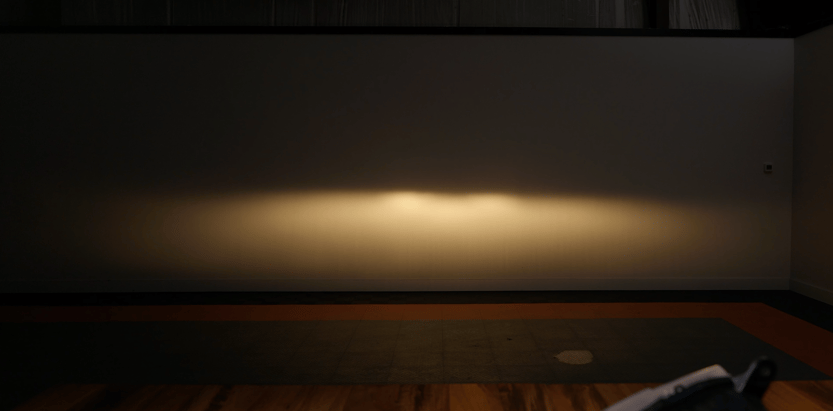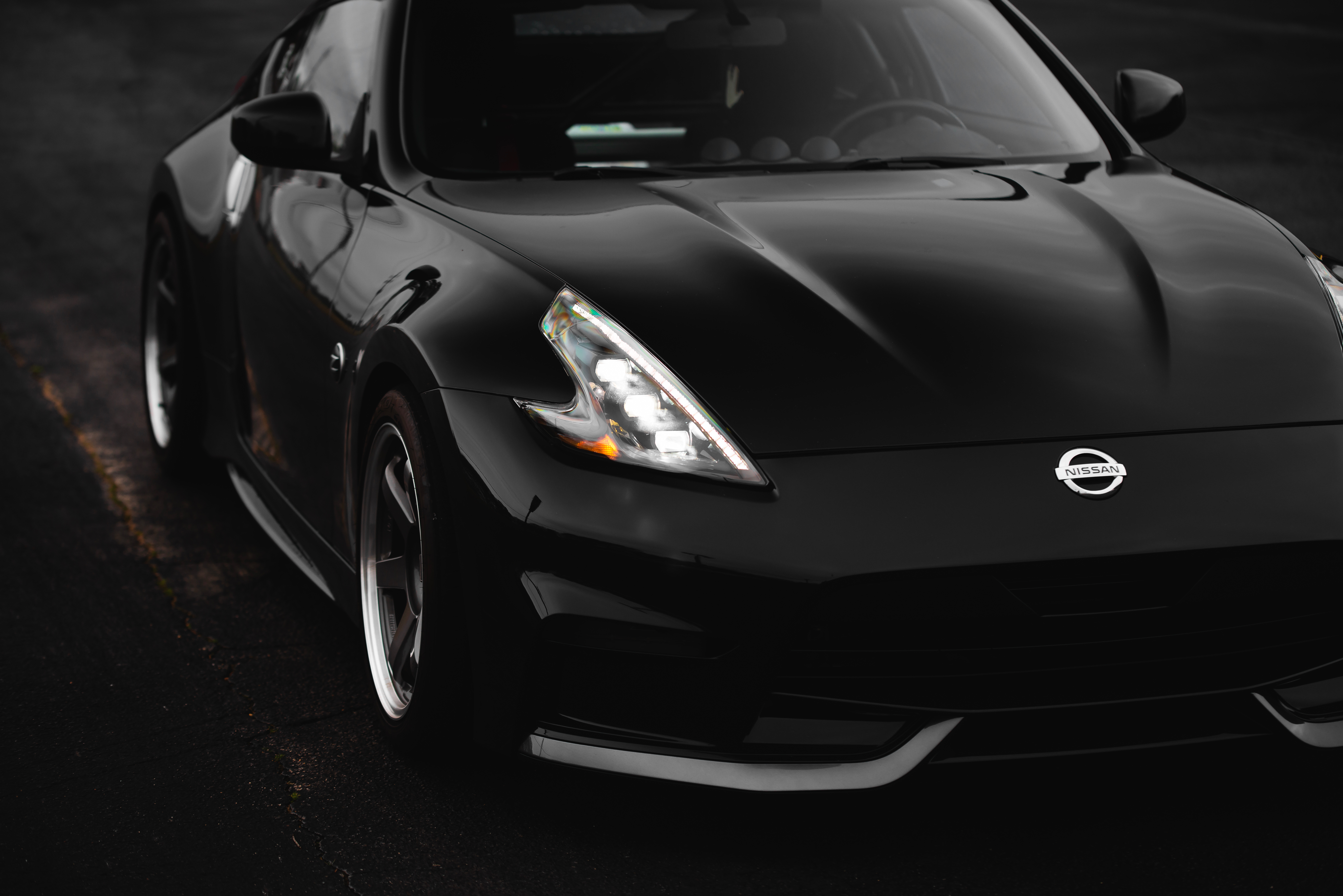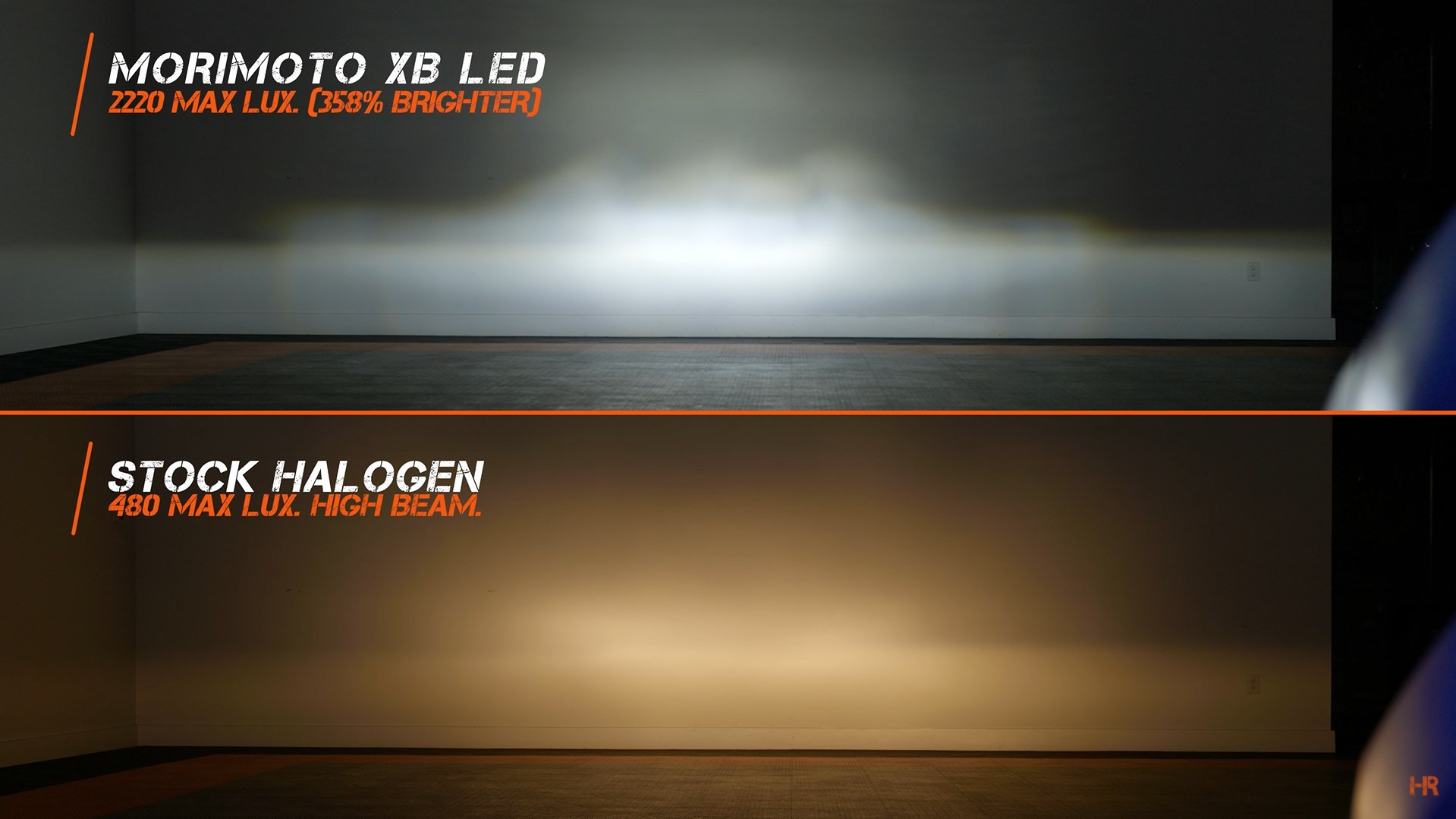Halogen vs. LED Lights – What’s the Difference?
As LED headlights become more common on new car models, it is important to know the difference between LED headlights and the halogen headlight housings they are replacing. LED headlights tend to be brighter and produce a sharper beam pattern than halogens. But this is not always the case.

Auto manufacturers will up the prices on their vehicles, citing the LED headlights’ updated appearance and improved performance. The downside being these lights are often negligibly different than the halogens. Only aftermarket brands such as Morimoto, GTR Lighting, and Alpharex offer improvements when it comes to a noticeable performance change over OEM housings.
What are Halogen Headlights?
Built based on a system of reflectors with bulbs similar to light bulbs in your home, these operate using filaments, typically tungsten. When they are turned on, the lights will reflect off the housing’s interior and create your beam pattern.
To avoid any confusion, when we say the housing, we are referring to the whole headlight assembly that can be removed from your car. New cars have very large housings compared to ones put on cars during the early 1990s and prior.

The beam pattern will be an orange to dark yellow color, coming in at roughly 3000-4000K color temperature. You can read more about how color temperature affects your light output here.
As for the pattern itself, it will not be as defined as an LED headlight’s pattern. Vague cutoff lines and uneven intensity is common on halogen headlights.

While they are usable, there is so much room for improvements to the performance of the light and aesthetics.
You will also find that halogen headlights have short lifespans. Over time, the light output will diminish, and the bulbs can either go out or break. Both issues are not present in LED headlights, or at the very least, uncommon.

What are LED Headlights?
Unlike halogen headlights, LED housings do not use reflectors. While you can put LED bulbs into a halogen housing, the performance will not be the best it can be. Not to mention that doing so is not legal for on-road use.
With full LED housings, whether that be the OEM or aftermarket ones, they use a series of projectors to create its beam pattern. OEM housings and aftermarket models like Morimoto’s XB line-up will meet & exceed all SAE, DOT, and FMVSS108 regulations when aimed properly. So, you do not need to worry about the legality of your setup.
With OEM LED headlights, these often play it safe to ensure they meet those SAE, DOT, and FMVSS108 regulations without issue. The downside is that auto manufacturers will end up having weaker headlights. This is where aftermarket retailers like GTR Lighting and Morimoto come in to play with their OEM+ looks and performance.

Aiming these headlights is also just as easy, if not easier than aiming your halogen headlights in some cases. Newer vehicles equipped with LED headlights come with an electronic mechanism that will help you do this.
On the other hand, if you have retrofitted your vehicle with LED bulbs, aiming these will be done in the same way you would your halogen headlights. Depending on your vehicle, this could be a gear you spin with a Phillips head screwdriver or by using your hands. If you would like more information on aiming your headlights, please see this video.

There also comes a level of reliability, LED headlights tend to last longer than halogen ones. They also maintain their intensity for a much greater time. More expensive LED headlights will also utilize an automated dimming feature to preserve the performance of the headlight.
How do LED and Halogen Lights compare in Performance?
Headlight Revolution does a great job at testing lights they sell and comparing them to the stock equivalent. You can check out their YouTube channel here.
But to pull an example, the halogen projector headlights on the 10th generation Honda Civic emit only 180 max. Lux. While the Morimoto XB LED headlights emit 590 max. lux. A 227 percent difference in light output.

The high beams present an even bigger difference. You can see the OEM headlight only emits 480 max. lux, that is not even as much as the XB LED’s low beam. With the XB LED, you are getting a 2220 max. lux high beam, a 358 percent increase over stock.

If you would like to read more about lux and how headlight outputs are measured, see this blog post.
There is also the factor of longevity. Eventually, the filaments you see inside the halogen bulbs will wear out and break. Over time, they will gradually lose their intensity too. This means that every few years you need to spend 50 to 100 dollars on buying new bulbs. LED headlights and bulbs do not have this issue.
Beam Patterns
There is also the beam pattern that each of these lights produces. As you can see in the comparison between the OEM halogen projector headlights on the Honda Civic and the Morimoto XB LED headlights, they are very different.
LED headlights will give you a much crisper beam pattern, with sharp cut-off lines, and a defined intensity to the light output. Rarely will you find faded edges and non-descript projections.

If you are using LED bulbs in a halogen headlight housing, you will likely notice that the beam pattern the LED bulbs produce is not near as refined as the halogen bulb, and emits significantly more glare. There are a few bulbs on the market that can perfectly replicate the halogen bulb’s beam pattern, like the GTR Lighting Ultra 2, Morimoto 2Stroke 3.0, S-V.4, and Xenon Depot Xtreme Pro. However, in any case, there is not a single LED bulb on the market that meets DOT and SAE regulations within the United States.
While it is more cost-effective to just swap your bulbs out, purchasing aftermarket headlight housings can bring a number of benefits. Often you will find performance benefits over stock, a refined beam pattern, and in the case of GTR Lighting and Morimoto, they can meet DOT and SAE regulations for use on the road.






.png?width=300&height=87&name=logo%20(1).png)